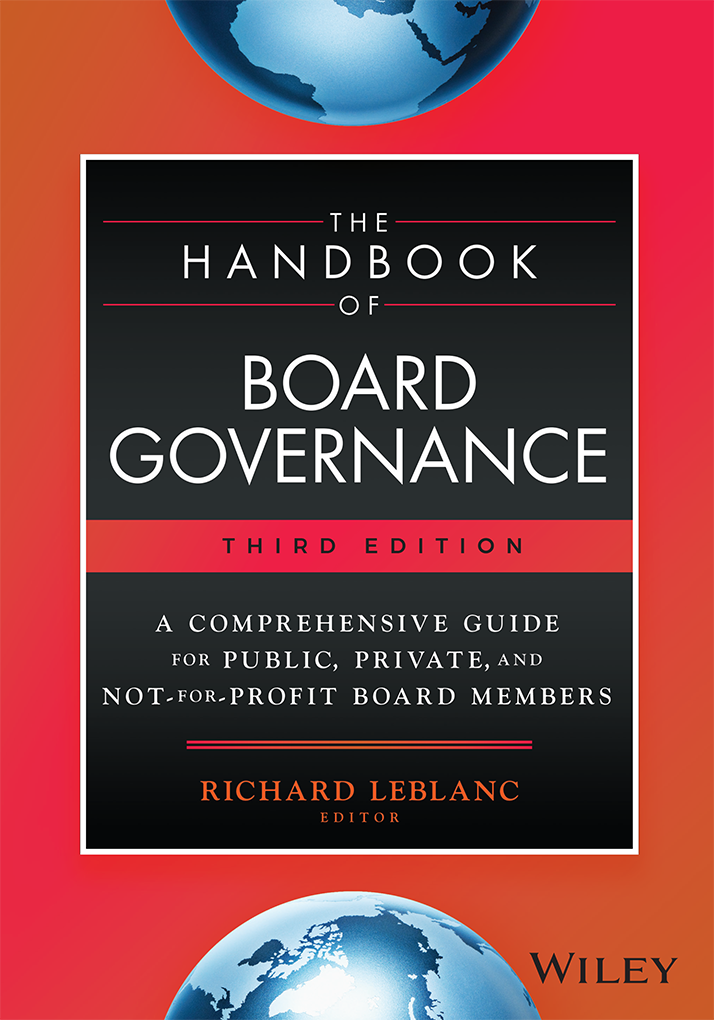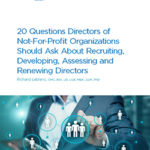There is a movement to diversify boards of directors in almost all industrial democracies as a result of the financial crisis. It has been termed “the number one issue in corporate governance.”
Diversity extends beyond women to include ethnicity, age and other areas. Depending on the survey and country, women on corporate boards have hovered anywhere from 10-15 % for several years. The statistics for non-Caucasians are worst, at about 3%.
Boards surprisingly are a self-selected and homogenous group. There is little ability for shareholders who own companies to propose or remove directors. The qualifications to be a director are minimal. There are no requirements for ongoing education and no license to practice, unlike other professionals such as lawyers, accountants or doctors. Past CEOs are preferred on boards, but the evidence does not support CEOs making better directors. And this practice discriminates against women and perpetuates reciprocity and favoritism.
Boards are a fixed size averaging about 7-10 directors depending on the company. Directors nominate people they know and feel comfortable with. To bring someone “different” on is, well, different, and someone else would need to go off the board. The pressure for the status quo is fraught with inertia and self-interest.
Governments have stepped in. On the one hand is the US approach, which is to require companies to disclose a “diversity plan.” On the other hand are full-fledged quotas, like the one proposed in Europe to have 40% of boards composed of women. In between both approaches is to have companies define diversity and objectives for diversifying their board, and report annually on progress. This seems to be the best approach.
The argument for diversity on boards is a “business case,” although there is no clear evidence that diverse boards create greater shareholder value. There is however evidence that diverse groups make better decisions and mitigate group-think, which is the tendency for similar groups to decide on the basis of agreement and social cohesiveness rather than the best decision, which could create dissent at least initially. There is also evidence that women make better monitors of management, and that performance of men increases when women join boards.
The other business case for diversity is a simple talent issue. By restricting boards to one type or class of director, boards are not making full use of available talent to match their stakeholder base. Women in many industries make the majority of purchase decisions. North American boards sorely need international directors from China, India and other huge markets. The last argument is perhaps the strongest – morality. Discriminating on the basis of prohibited grounds such as gender, race, military status, and sexual orientation or otherwise is not only unfair but also illegal.
So how do boards diversify themselves? What are leading practices the best boards are doing? Three steps:
Step 1: Recruit directors solely on the basis of competency, not whom you know
A board is a team. Team members have different abilities. “Competency” can include experience, skills, knowledge and behaviors. A good board draws up a matrix of competencies it needs on one axis and individual directors along the other. It defines the competencies and the scale, and then individual directors assess themselves relative to each other. If done right, it is apparent which directors may not be needed, and what competencies are needed in future directors.
Step 2: Recruit directors whom you do not know personally and who are first-time directors
Once you have the desired director competencies, the next step is to recruit directors who fill this gap. Cast your net wide and go beyond personal and professional networks. Have a diligent way of short-listing resumes and ask candidates to address the specific competencies you need. Conduct background checks, reference checks and individual interviews for open spots, as you would any other management position. Don’t be afraid to short-list diverse candidates whom you likely will not know, including first-time directors who have stellar qualifications your board needs. Most directors now serve on one and at most two boards; so admitting first-time directors is very common.
Step 3: Link director time on the board to performance
Have onboarding, coaching and development for new directors. Then, assess each director on his or her contribution at regular intervals. This is difficult to do if done in a superficial way or through a self-analysis given unconscious biases. Have a rigorous director performance assessment with assistance from an expert third party, and link the results to re-nomination. Each director competes for his or her own position every year. No guaranteed tenure or indefinite service.
Then, you should disclose the basis upon which directors are recruited, developed and assessed so shareholders can vote meaningfully on each director at the time of renewal or removal. This sets the tone that the board holds itself responsible and accountable to shareholders in the same way it expects management to be accountable to itself. Your board and organization will be the better for it.
Lastly, expect that a current director who objects to any of the above best practices is doing so out of self-interest. When he objects (and it most often will be a “he”), it could include phrases such as “No one knows this person” or “This person is not qualified like we are,” which is code for entrenchment, ask this director to phrase all objections with the following language: “I believe it is in the best interests of the organization that…” This should address the objection.












